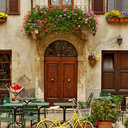Azerbaijani
Albanian
Arabic
Armenian
Azerbaijani
Belarusian
Bengali
Bosnian
Catalan
Czech
Danish
Deutsch
Dutch
English
Estonian
Finnish
Français
Greek
Haitian Creole
Hebrew
Hindi
Hungarian
Icelandic
Indonesian
Irish
Italian
Japanese
Korean
Latvian
Lithuanian
Macedonian
Mongolian
Norwegian
Persian
Polish
Portuguese
Romanian
Russian
Serbian
Slovak
Slovenian
Spanish
Swahili
Swedish
Turkish
Ukrainian
Vietnamese
Български
中文(简体)
中文(繁體)
Phytomedicine 2019-Apr
Yalnız qeydiyyatdan keçmiş istifadəçilər məqalələri tərcümə edə bilərlər
Giriş / Qeydiyyatdan keçin
Bağlantı panoya saxlanılır
Elm tərəfindən dəstəklənən ən tam dərman bitkiləri bazası
- 55 dildə işləyir
- Elm tərəfindən dəstəklənən bitki mənşəli müalicələr
- Təsvirə görə otların tanınması
- İnteraktiv GPS xəritəsi - yerdəki otları etiketləyin (tezliklə)
- Axtarışınızla əlaqəli elmi nəşrləri oxuyun
- Təsirlərinə görə dərman bitkilərini axtarın
- Maraqlarınızı təşkil edin və xəbər araşdırmaları, klinik sınaqlar və patentlər barədə məlumatlı olun
Bir simptom və ya bir xəstəlik yazın və kömək edə biləcək otlar haqqında oxuyun, bir ot yazın və istifadə olunan xəstəliklərə və simptomlara baxın.
* Bütün məlumatlar dərc olunmuş elmi araşdırmalara əsaslanır


